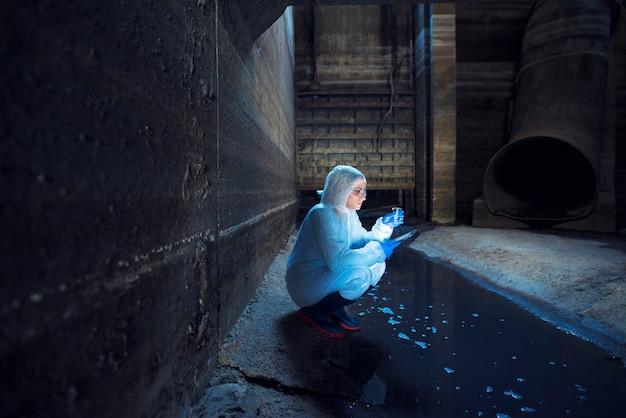Mixtures are all around us, from the ingredients in our meals to the substances we encounter in everyday life. But have you ever wondered how to separate them? Whether you’re a science enthusiast or just curious about the fascinating world of mixtures, we’ve got you covered.
In this blog post, we’ll explore five simple and effective ways to separate mixtures. We’ll dive into techniques such as filtration, evaporation, and more, to give you a comprehensive understanding of how to tackle different types of mixtures. So, if you’ve ever pondered how to separate lemon juice from water, or even salt from water, you’re in the right place!
Are you ready to delve into the world of mixtures and unlock the secrets of separation? Let’s get started!

5 Clever Ways to Separate Mixtures
Distillation: The Art of Booze Extraction
When it comes to separating mixtures, distillation is the real spirit of the matter. This age-old technique has been refining liquids like fine whiskey since time immemorial. By heating the mixture and capturing the vapor that evaporates at different temperatures, you can create a pure and potent elixir, leaving impurities behind like distant memories of your embarrassing karaoke performance.
Filtration: Like a Coffee Lover’s Dream
Just as coffee enthusiasts use their trusty filters to separate the flavorful liquid from the less appealing coffee grounds, filtration is a fantastic method for separating mixtures. Imagine a delicious cup of joe without those pesky granules, much like enjoying life without that never-ending pile of laundry. By passing the mixture through a filter, whether it’s paper, cloth, or even a porous substance like charcoal, you can bid farewell to unwanted particles and revel in smooth, seductive separations.
Chromatography: Separating Colors Like a Kid With a Magic Marker
Remember being a kid and watching the ink colors separate and blend on that coffee filter-inspired art project? Chromatography harnesses that same magic to separate mixtures. By allowing the mixture to travel across a medium, such as a strip of paper or a column filled with gel or other materials, you can watch in awe as the components spread out like an artist’s palette. This method is perfect for analyzing mixtures and proving once and for all that red Skittles are their own distinct flavor.
Evaporation: Making Water Disappear (Almost Like a Magic Trick)
Wouldn’t it be marvelous if you could make that pesky water in your mixture vanish into thin air? Well, with evaporation, you’re one step closer to becoming a magician. By applying heat, you can coax the liquid components of your mixture to transform into vapor, leaving behind less volatile substances. It’s like making your troubles disappear, except more scientifically sound. Just remember not to evaporate your entire drink collection during experiments.
Magnetism: The Secret Attraction of Metals
If your mixture happens to include some magnetic elements, then magnetism is your best friend in separation. Much like a charismatic magnet can attract an unsuspecting paperclip, this method helps you separate mixtures containing metals. By wielding a magnetic force, you can effortlessly draw out the metallic components, leaving the non-magnetic ones in awe of your sorting skills. Just be careful not to let your newfound magnetic powers go to your head—unless you want to become the neighborhood superhero, “The Magneto.”
Now that you know these 5 ingenious ways to separate mixtures, you’ll have the power to unravel even the most entangled combinations. So go forth, experiment, and remember to have fun while getting your mixtures to let go of each other. After all, separation can be just as satisfying and rewarding as a perfectly brewed cup of coffee or a nightcap enjoyed in good company.

FAQ: What are 5 ways to separate mixtures
Can you separate lemon juice from water
Yes, lemon juice can be separated from water using a technique called distillation. By heating the mixture, the water will evaporate, leaving behind the lemon juice. This process takes advantage of the different boiling points of the two substances.
What are 5 ways to separate mixtures
There are various techniques to separate mixtures, and here are five commonly used methods:
1. Filtration
Filtration is an effective way to separate solid substances from liquids or gases. It involves passing the mixture through a filter medium, which traps the solids while allowing the liquids or gases to pass through.
2. Distillation
Distillation is used to separate liquids with different boiling points. The mixture is heated, and the component with the lower boiling point evaporates first. The vapor is then condensed and collected as a separate substance.
3. Decantation
Decantation is a simple method that involves pouring off a liquid from a mixture, leaving the solid sediment behind. This technique is often used for separating liquids that have different densities or do not mix well.
4. Extraction
Extraction is commonly used to separate dissolved substances from a liquid mixture. By adding a solvent in which one component is soluble and the other is not, the desired substance can be selectively extracted.
5. Chromatography
Chromatography is a versatile separation technique that relies on the differential movement of substances in a mobile phase through a stationary phase. It is particularly useful for separating components of complex mixtures, such as inks or pigments.
How would you separate a sand and gravel mixture
One way to separate a mixture of sand and gravel is through sieving. By passing the mixture through a mesh or sieve, the larger gravel particles will be retained while the smaller sand particles pass through.
What technique will Jocelyn use if she wants to separate salt mixed with water in a container
If Jocelyn wants to separate salt mixed with water, she can use evaporation. By heating the mixture, the water will evaporate, leaving behind the salt crystals. These can then be collected once the water has completely evaporated.
Is used to separate salt from water
As mentioned earlier, evaporation is commonly used to separate salt from water. By heating the mixture, the water evaporates, and the salt is left behind.
What happens if you overbeat cake batter
If you overbeat cake batter, you may incorporate too much air into the mixture. This can result in a cake that is overly dense or has large air pockets. It’s important to follow the recipe instructions for the recommended mixing time to achieve the desired texture.
How can you avoid lumps when you mix a roux and a liquid base together
To avoid lumps when mixing a roux and a liquid base together, it’s best to gradually add the liquid while constantly whisking the mixture. This allows the flour in the roux to disperse evenly and prevents clumping. Alternatively, you can also use a fine sieve to strain the mixture and remove any lumps.
What are the types of separating mixtures
There are several types of techniques for separating mixtures, including:
– Filtration
– Distillation
– Decantation
– Extraction
– Chromatography
What other mixtures can be separated by evaporation
Evaporation is a versatile method that can be used to separate various mixtures. Besides separating salt from water, it can also be employed to separate solvents from dissolved substances, recover dissolved solids, or concentrate a solution.
How can I thicken a sauce without lumps
To thicken a sauce without lumps, you can use a technique called slurry. Mix a small amount of the sauce’s liquid with a thickening agent like cornstarch or flour to create a smooth paste. Gradually whisk this paste back into the sauce, ensuring it is well incorporated and avoids clumping.
What are the 8 ways to separate mixtures
There are many ways to separate mixtures, but here are eight commonly used methods:
– Filtration
– Distillation
– Decantation
– Separating Funnel
– Chromatography
– Centrifugation
– Evaporation
– Magnetic Separation
Can you physically separate the mixture how
Yes, physical separation of mixtures is possible. Various techniques like filtration, decantation, sieving, or using a magnet can physically separate different components of a mixture. The choice of method depends on the nature of the mixture and the desired separation.
How do you separate stone from sand
To separate stone from sand, you can use the technique of sieving. By passing the mixture through a sieve or mesh, the larger stone particles will be retained while the smaller sand particles pass through. This allows for the separation of the two components.
